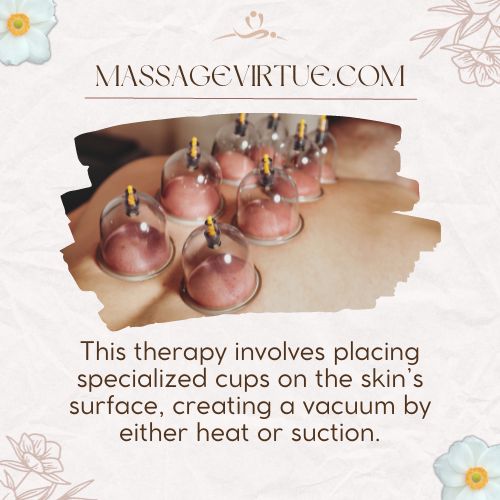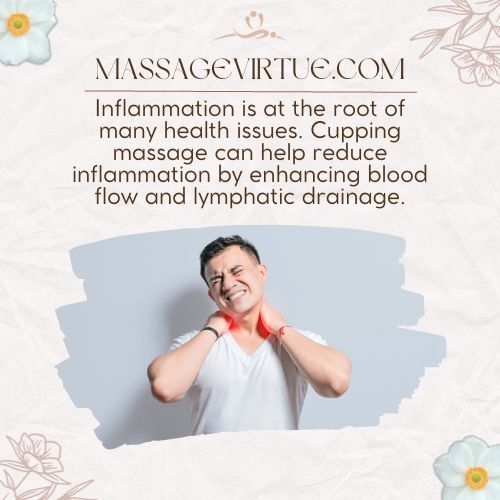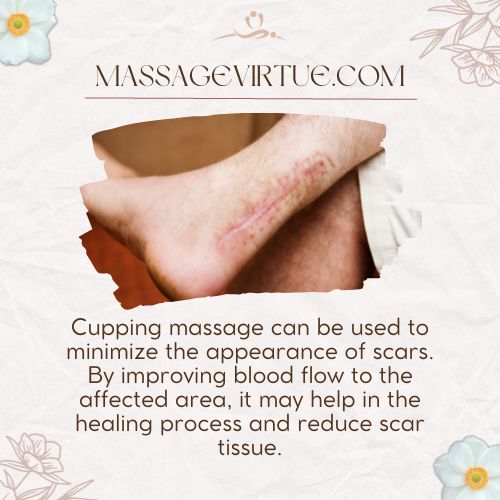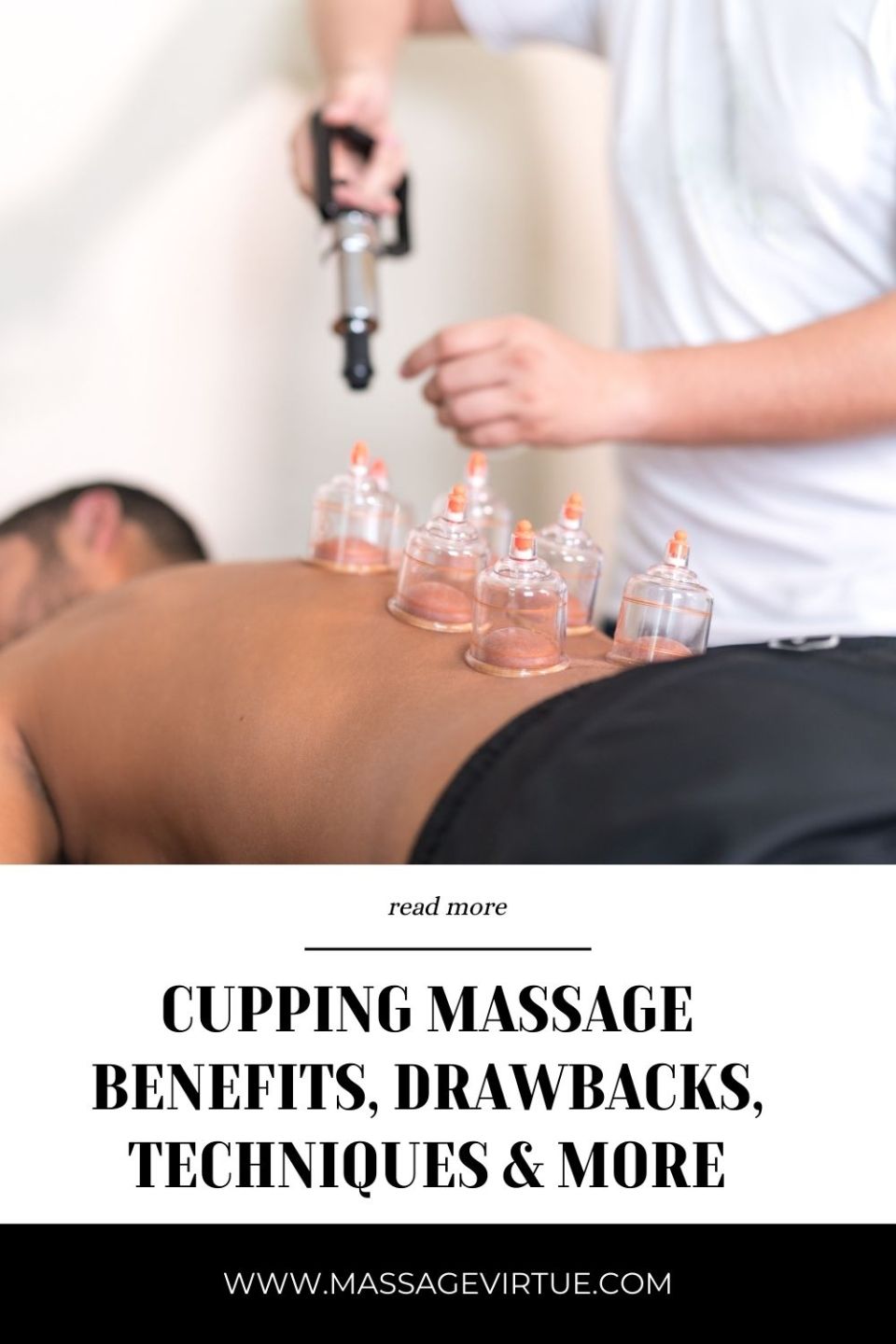If you’ve been on the lookout for alternative therapies to enhance your well-being, you might have come across the term “cupping massage.”
This practice has gained popularity in recent years for its potential health benefits.
In this article, we’ll delve into the world of cupping massage, exploring what it is, its potential benefits, any side effects you should be aware of, and who can benefit from this therapy.
So, let’s dive in and discover the intriguing world of cupping massage!
What is a Cupping Massage?
Cupping massage, also known simply as cupping therapy, is an age-old holistic healing technique deeply rooted in traditional Chinese medicine.

This therapy involves placing specialized cups on the skin’s surface, creating a vacuum by either heat or suction.
The cups are typically made of glass, silicone, or plastic and can be of various sizes.
Once the cups are attached to the skin, they create a gentle suction effect, drawing the skin and underlying tissues upward into the cup.
This suction creates a space between the skin and muscle layers, promoting increased blood flow and circulation to the targeted areas. The therapy is often used for localized treatment, focusing on specific areas of concern.
Cupping Massage Benefits
Now that we’ve covered the basics, let’s explore the potential benefits of cupping massage:
1. Pain Management
Cupping massage is renowned for its effectiveness in alleviating various types of pain. It can provide relief from muscular discomfort, joint pain, and even chronic conditions like fibromyalgia.
The improved blood flow and circulation can help reduce inflammation, easing pain and discomfort.
2. Muscle Relaxation
The gentle suction of cupping therapy encourages the release of muscle tension.
This can be particularly beneficial for athletes or anyone dealing with muscle tightness and knots. Cupping can aid in quicker muscle recovery and improved flexibility.
3. Inflammation Reduction
Inflammation is at the root of many health issues. Cupping massage can help reduce inflammation by enhancing blood flow and lymphatic drainage.

This can be especially beneficial for individuals dealing with conditions like arthritis.
4. Stress Relief
Cupping therapy promotes relaxation by stimulating the parasympathetic nervous system. This can lead to reduced stress and anxiety levels, contributing to an overall sense of well-being.
5. Improved Circulation
Cupping massage enhances blood circulation, which is essential for the body’s overall health.
Better circulation means that oxygen and nutrients reach cells more efficiently, supporting various bodily functions.
6. Detoxification
The suction effect created by cupping can help draw toxins and waste products to the skin’s surface, making it easier for the body to eliminate them.
This detoxification process can improve overall health and vitality.
7. Aiding Digestion
Cupping therapy may also benefit digestion by stimulating the digestive organs. It can help with issues like bloating and indigestion, promoting a healthier gastrointestinal system.
8. Fertility Support
Some individuals have reported improved fertility outcomes with cupping therapy.
While not a guaranteed solution, it may be a complementary approach for those struggling with fertility issues.
9. Scar Reduction
Cupping massage can be used to minimize the appearance of scars.

By improving blood flow to the affected area, it may help in the healing process and reduce scar tissue.
10. Headache Relief
If you suffer from tension headaches, cupping massage might provide relief. By relaxing the neck and shoulder muscles, it can alleviate the tension contributing to headaches.
Cupping Massage Side Effects
Before you consider undergoing cupping massage, it’s essential to be aware of potential side effects. Here’s a tabular representation of these side effects:
| Side Effect | Description |
| Temporary Bruising | Cupping can leave circular marks on the skin that resemble bruises. These typically fade within a few days to a week. |
| Skin Discomfort | Some individuals may experience mild discomfort or irritation at the cupping sites. This usually subsides quickly. |
| Dizziness | In rare cases, cupping therapy may induce dizziness or lightheadedness. It’s essential to rest after a session and hydrate adequately. |
| Skin Infections | Improperly sanitized cups or unsterilized equipment can lead to skin infections. Ensure you receive cupping from a reputable practitioner. |
| Allergic Reactions | Silicone or other cup materials can cause allergies in sensitive individuals. Always inform your practitioner of any allergies beforehand. |
Who Should Get Cupping Massage?
Cupping massage is a versatile therapy with potential benefits for a wide range of individuals. Here are some groups of people who may consider trying cupping:
- Athletes: Cupping can aid in muscle recovery, improving performance and preventing injuries.
- Chronic Pain Sufferers: Individuals dealing with chronic pain conditions like fibromyalgia or arthritis may find relief through cupping therapy.
- Stress and Anxiety Management: If you’re looking for natural ways to manage stress and anxiety, cupping can promote relaxation.
- Those with Digestive Issues: Cupping therapy may help alleviate digestive problems such as bloating or indigestion.
- Scar Reduction: Anyone looking to minimize the appearance of scars may benefit from cupping.
Final Thoughts Cupping Massage Benefits
In conclusion, cupping massage offers a myriad of potential benefits, from pain relief and muscle relaxation to stress reduction and improved circulation.
However, it’s essential to approach this therapy with a full understanding of its side effects and consult with a qualified practitioner.
Whether you’re an athlete seeking muscle recovery or someone looking to enhance their overall well-being, cupping massage may hold the key to a healthier, more relaxed you. Consider giving it a try and experience the ancient wisdom of cupping for yourself.
FAQs
Why Can’t You Shower After Cupping?
Showering immediately after cupping is not recommended because the skin’s pores are temporarily open after a cupping session.
Taking a shower can expose your body to temperature changes, which might lead to discomfort or potential complications.
What Should You Not Do After Cupping?
After cupping, it’s advisable to avoid activities that can increase the risk of complications or discomfort. Here are some things you should not do:
- Avoid Hot Showers
- Avoid Intense Physical Activity
- Don’t Expose Cupping Marks to Sunlight
- Avoid Cold Drafts
- Skip Alcohol and Caffeine
Where Do the Toxins Go After Cupping?
After a cupping session, the toxins are brought closer to the surface, making it easier for your body to eliminate them through natural processes like sweating, urination, and bowel movements.
It’s important to stay hydrated and maintain a healthy lifestyle to support the detoxification process post-cupping.


